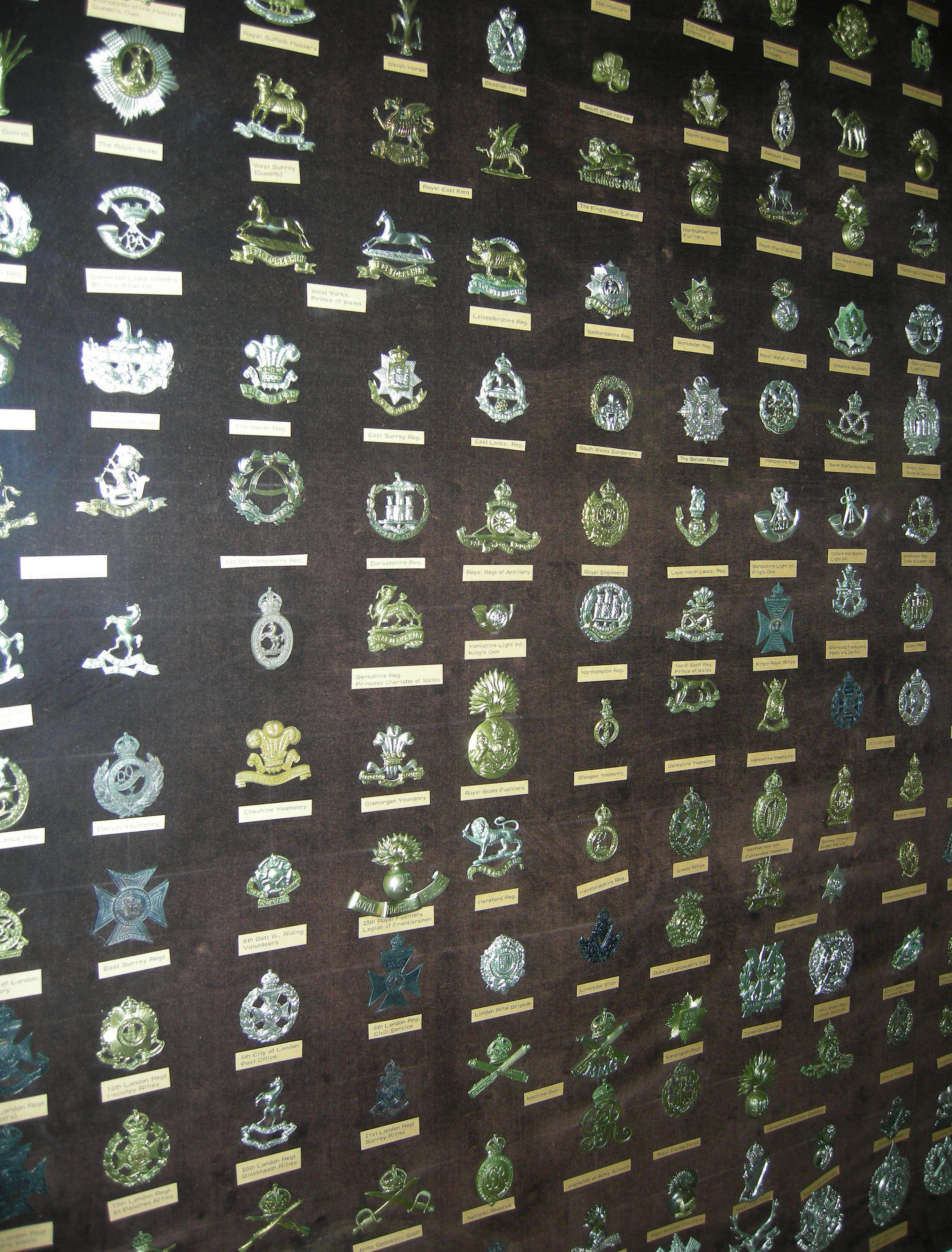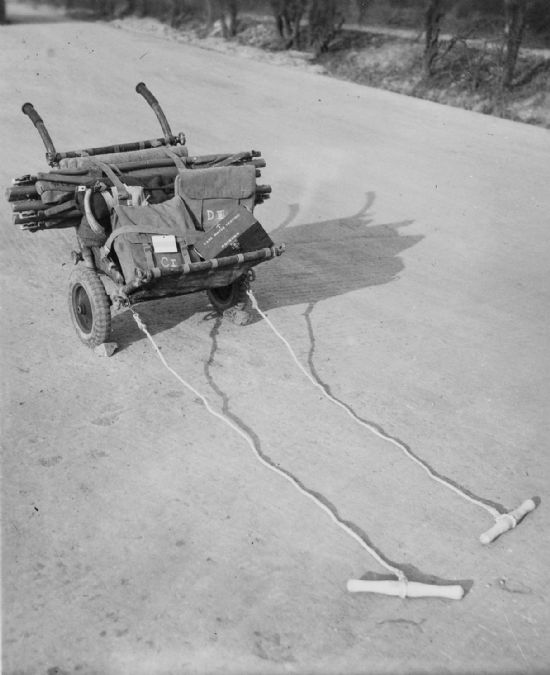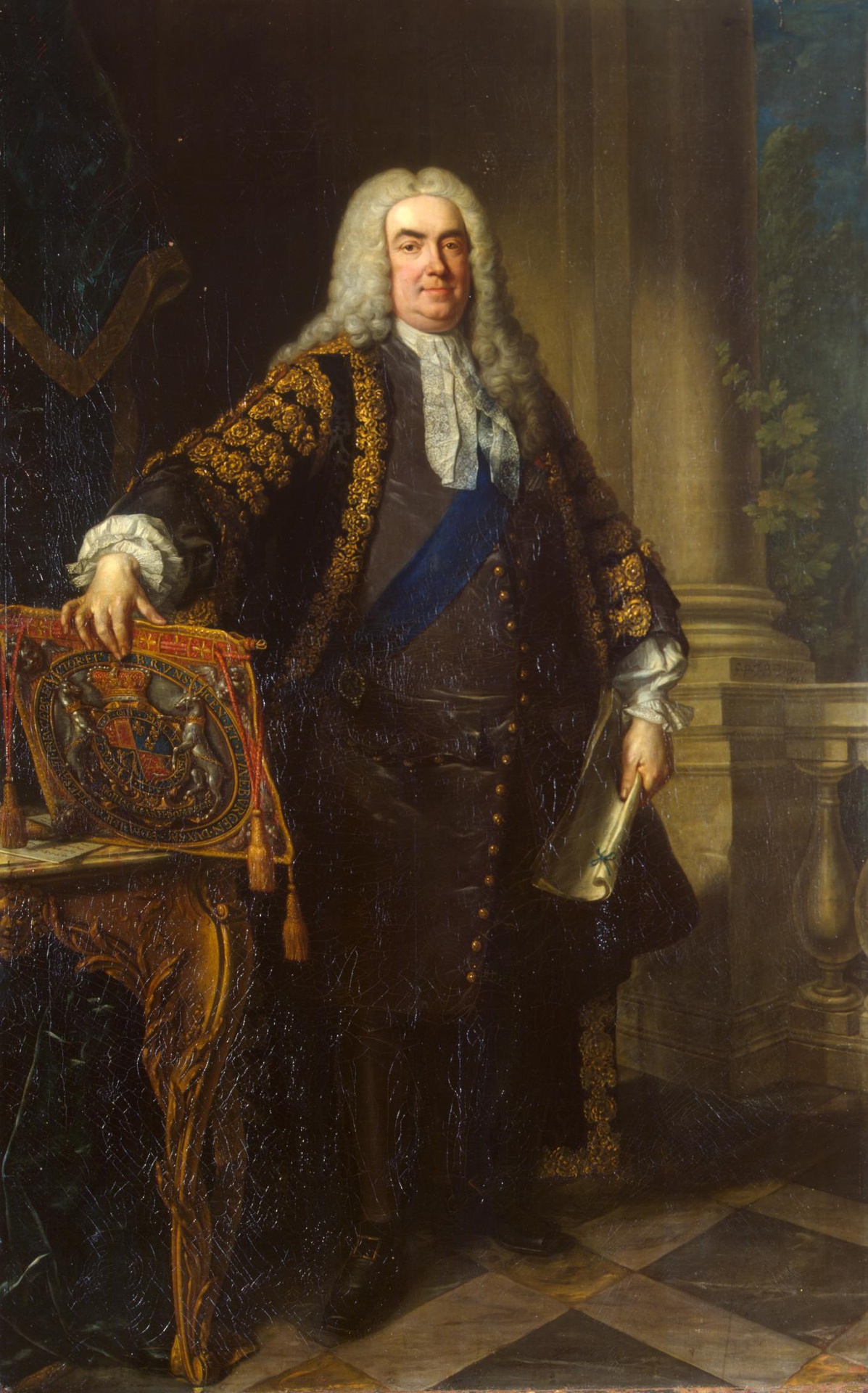|
133rd (Parachute) Field Ambulance
The 133rd (Parachute) Field Ambulance was a Royal Army Medical Corps unit of the British Army's airborne forces during the Second World War. The 133rd (Parachute) Field Ambulance was formed in Palestine in January 1943, by the conversion of the 133rd Field Ambulance to parachute duties. It was then assigned to the 4th Parachute Brigade, part of the 1st Airborne Division. As part of the 1st Airborne Division it took part in Operation Slapstick, part of the Allied invasion of Italy. The unit returned to England at the end of 1943, to prepare for their next mission. That was operation Market Garden in the Netherlands. During the following battle of Arnhem, the division was destroyed only 2,100 men returning from the 10,000 that had started the mission. Amongst the men who remained behind from the 133rd were those men not already captured during the battle, who choose to remain behind with the wounded, becoming prisoners of war. Reformed after the battle the 133rd took part in Opera ... [...More Info...] [...Related Items...] OR: [Wikipedia] [Google] [Baidu] |
Cap Badge
A cap badge, also known as head badge or hat badge, is a badge worn on uniform headgear and distinguishes the wearer's nationality and/or organisation. The wearing of cap badges is a convention commonly found among military and police forces, as well as uniformed civilian groups such as the Scouting, Boy Scouts, civil defence organisations, ambulance services (e.g. the St. John Ambulance Brigade), customs services, fire services etc. Cap badges are a modern form of Heraldic badge, heraldry and their design generally incorporates highly symbolic devices. Some badges that contain images of lions or other cats are sometimes informally referred to as cat badges. Instances in military forces British armed forces The British Armed Forces utilise a variety of metal and cloth cap badges on their headdress, generally on caps and berets. They are also worn on Uniforms_of_the_British_Armed_Forces#Turbans, Sikh turbans. British Army In the British Army (as well as other Commonwealth o ... [...More Info...] [...Related Items...] OR: [Wikipedia] [Google] [Baidu] |
Allied Invasion Of Italy
The Allied invasion of Italy was the Allies of World War II, Allied Amphibious warfare, amphibious landing on mainland Italy that took place from 3 September 1943, during the Italian campaign (World War II), Italian campaign of World War II. The operation was undertaken by General (United Kingdom), General Harold Alexander, 1st Earl Alexander of Tunis, Sir Harold Alexander's 15th Army Group (comprising General (United States), General Mark W. Clark's Fifth United States Army, American Fifth Army and General Bernard Montgomery's Eighth Army (United Kingdom), British Eighth Army) and followed the successful Allied invasion of Sicily. The main invasion force landed on the west coast of Italy at Salerno on 9 September as part of Operation Avalanche, while two supporting operations took place in Calabria (Operation Baytown) and Taranto (Operation Slapstick). Background Allied plan Following the defeat of the Axis powers in Tunisian campaign, North Africa in May 1943, there was di ... [...More Info...] [...Related Items...] OR: [Wikipedia] [Google] [Baidu] |
16th (Parachute) Field Ambulance
The 16th (Parachute) Field Ambulance was a Royal Army Medical Corps unit of the British airborne forces British Army during the Second World War, during the Second World War. The unit was the first parachute field ambulance unit of the British Army. Their first deployment was in Operation Torch the Allies of World War II, Allied landings in North Africa Campaign, North Africa. This was followed by Operation Fustian during the Allied invasion of Sicily. Their third mission was Operation Slapstick, a seaborne landing at Taranto in Italy. The 16th (Parachute) Field Ambulance then returned to England to prepare for operations in North West Europe. Their next and final parachute landing was in September 1944, during the Battle of Arnhem. In the battle the 1st Parachute Brigade landed on the first day and the 16th (Parachute) Field Ambulance established at dressing station in a local hospital. Within days the location was overrun by the Germans and the majority of the field ambulance w ... [...More Info...] [...Related Items...] OR: [Wikipedia] [Google] [Baidu] |
195th (Airlanding) Field Ambulance
The 195th (Airlanding) Field Ambulance was a Royal Army Medical Corps unit of the British airborne forces during the Second World War. The 195th was the second airlanding Field Ambulance formed by the British Army. Once raised it was assigned to the 6th Airlanding Brigade, which was part of the 6th Airborne Division. It accompanied the brigade on operations, seeing service in the Normandy landings in 1944, and the River Rhine crossing in 1945, after which they remained in Germany following the advance until the end of the war. At the end of May 1945, the 195th was withdrawn back to England, but by the end of the year had moved with the 6th Airborne Division to the British mandate of Palestine in an internal security role. The 195th served in Palestine until the 6th Airlanding Brigade was disbanded. Background Impressed by the success of German airborne operations, during the Battle of France, the British Prime Minister, Winston Churchill, directed the War Office to investiga ... [...More Info...] [...Related Items...] OR: [Wikipedia] [Google] [Baidu] |
181st (Airlanding) Field Ambulance
The 181st (Airlanding) Field Ambulance was a Royal Army Medical Corps unit of the British airborne forces during the Second World War. The Field Ambulance was assigned to the 1st Airlanding Brigade, the glider borne element of the 1st Airborne Division. Some men of the unit took part in the first parachute raid on the French coast in 1942. The unit then moved to Tunisia for operations in the Mediterranean theatre. During Operation Ladbroke, part of the Allied invasion of Sicily, a shortage of gliders resulted in only six, instead of the required thirty, being allocate to the Field Ambulance. Of those six, only one reached land the others crashed into the sea. They were next deployed during the Allied invasion of Italy in Operation Slapstick. Soon afterwards the Field Ambulance returned to the United Kingdom, then in September 1944, they landed by glider in the Netherlands. In the battle of Arnhem the Field Ambulance remained behind with the wounded, and he majority of its men ... [...More Info...] [...Related Items...] OR: [Wikipedia] [Google] [Baidu] |
Field Ambulance
A field ambulance (FA) is the name used by the British Army and the armies of other Commonwealth nations to describe a mobile medical unit that treats wounded soldiers very close to the combat zone. In the British military medical system that developed during the First World War, the FAs formed an intermediate level in the Casualty (person), casualty evacuation chain that stretched from the regimental aid posts near the front line and the casualty clearing stations located outside the range of the enemy's artillery. FAs were often assigned to the brigades of a Division (military), division. The term is no longer used in the British Royal Army Medical Service. They were replaced by medical regiments (which are assigned to brigades) and field hospitals. It is however still used in the Royal Canadian Medical Service within the Canadian Armed Forces. World War I Sinai and Palestine Campaign During the October and November 1917 offensive by the Egyptian Expeditionary Force there we ... [...More Info...] [...Related Items...] OR: [Wikipedia] [Google] [Baidu] |
1st Parachute Brigade
The 1st Parachute Brigade, or the Red Devils, was an airborne forces brigade formed by the British Army during the Second World War. As its name indicates, the unit was the first parachute infantry brigade formation in the British Army. Formed from three parachute battalions as well as support units and assigned to the 1st Airborne Division, the brigade first saw action in Operation Biting – a raid on a German radar site at Bruneval on the French coast. They were then deployed in the Torch landings in Algeria, and the following Tunisia Campaign, where it fought as an independent unit. In North Africa each of the brigade's three parachute battalions took part in separate parachute assaults. The brigade then fought in the front line as normal infantry until the end of the campaign, during which they earned the nickname the "Red Devils". Following the Axis surrender in North Africa, when 1st Airborne Division arrived in Tunisia the brigade once more came under its command. ... [...More Info...] [...Related Items...] OR: [Wikipedia] [Google] [Baidu] |
Corps
Corps (; plural ''corps'' ; from French , from the Latin "body") is a term used for several different kinds of organization. A military innovation by Napoleon I, the formation was formally introduced March 1, 1800, when Napoleon ordered General Jean Victor Marie Moreau to divide his command into four corps. The size of a corps varies greatly, but two to five divisions and anywhere from 40,000 to 80,000 are the numbers stated by the US Department of Defense. Within military terminology a corps may be: *an military organization, operational formation, sometimes known as a field corps, which consists of two or more division (military), divisions, such as the I Corps (Grande Armée), , later known as ("First Corps") of Napoleon I's ); *an administrative corps (or Muster (military), mustering) – that is a #Administrative corps, specialized branch of a military service (such as an artillery corps, an armoured corps, a signal corps, a medical corps, a marine corps, or a corps of ... [...More Info...] [...Related Items...] OR: [Wikipedia] [Google] [Baidu] |
War Office
The War Office has referred to several British government organisations throughout history, all relating to the army. It was a department of the British Government responsible for the administration of the British Army between 1857 and 1964, at which point its functions were transferred to the new Ministry of Defence (United Kingdom), Ministry of Defence (MoD). This article contains text from this source, which is available under th Open Government Licence v3.0 © Crown copyright It was equivalent to the Admiralty (United Kingdom), Admiralty at that time, which was responsible for the Royal Navy (RN), and (much later) the Air Ministry, which oversaw the Royal Air Force (RAF). The name 'Old War Office' is also given to the former home of the department, located at the junction of Horse Guards Avenue and Whitehall in central London. The landmark building was sold on 1 March 2016 by HM Government for more than British pound, £350 million, on a 250-year lease for conversion int ... [...More Info...] [...Related Items...] OR: [Wikipedia] [Google] [Baidu] |
Winston Churchill
Sir Winston Leonard Spencer Churchill (30 November 1874 – 24 January 1965) was a British statesman, military officer, and writer who was Prime Minister of the United Kingdom from 1940 to 1945 (Winston Churchill in the Second World War, during the Second World War) and again from 1951 to 1955. For some 62 of the years between 1900 and 1964, he was a Member of Parliament (United Kingdom), member of parliament (MP) and represented a total of five Constituencies of the Parliament of the United Kingdom, constituencies over that time. Ideologically an adherent to economic liberalism and imperialism, he was for most of his career a member of the Conservative Party (UK), Conservative Party, which he led from 1940 to 1955. He was a member of the Liberal Party (UK), Liberal Party from 1904 to 1924. Of mixed English and American parentage, Churchill was born in Oxfordshire into the wealthy, aristocratic Spencer family. He joined the British Army in 1895 and saw action in British R ... [...More Info...] [...Related Items...] OR: [Wikipedia] [Google] [Baidu] |
Prime Minister Of The United Kingdom
The prime minister of the United Kingdom is the head of government of the United Kingdom. The prime minister Advice (constitutional law), advises the Monarchy of the United Kingdom, sovereign on the exercise of much of the Royal prerogative in the United Kingdom, royal prerogative, chairs the Cabinet of the United Kingdom, Cabinet, and selects its Minister of the Crown, ministers. Modern prime ministers hold office by virtue of their ability to command the confidence of the House of Commons of the United Kingdom, House of Commons, so they are invariably Member of Parliament (United Kingdom), members of Parliament. The office of prime minister is not established by any statute or constitutional document, but exists only by long-established Constitutional conventions of the United Kingdom, convention, whereby the monarch appoints as prime minister the person most likely to Confidence motions in the United Kingdom, command the confidence of the House of Commons. In practice, thi ... [...More Info...] [...Related Items...] OR: [Wikipedia] [Google] [Baidu] |
Battle Of France
The Battle of France (; 10 May – 25 June 1940), also known as the Western Campaign (), the French Campaign (, ) and the Fall of France, during the Second World War was the Nazi Germany, German invasion of the Low Countries (Belgium, Luxembourg and the Netherlands) and French Third Republic, France. The plan for the invasion of the Low Countries and France was called (Case Yellow or the Manstein plan). (Case Red) was planned to finish off the French and British after the Dunkirk evacuation, evacuation at Dunkirk. The Low Countries and France were defeated and occupied by Axis troops down to the Demarcation line (France), Demarcation line. On 3 September 1939, French declaration of war on Germany (1939), France and United Kingdom declaration of war on Germany (1939), Britain declared war on Nazi Germany, over the German invasion of Poland on 1 September. In early September 1939, the French army began the limited Saar Offensive but by mid-October had withdrawn to the start line ... [...More Info...] [...Related Items...] OR: [Wikipedia] [Google] [Baidu] |










